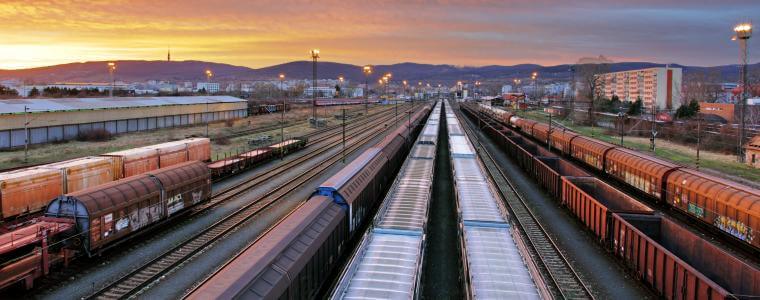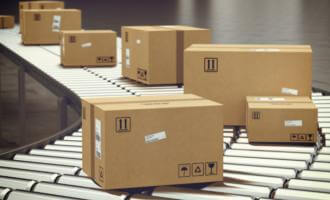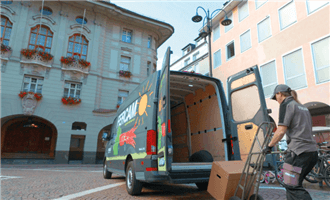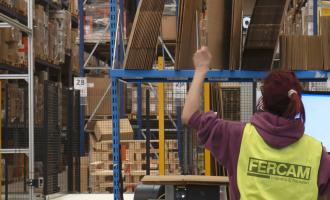
29 April 2022 - by: Giancarlo Bertalero
Intermodal transport: decision parameters and hidden advantages
Diversifying transport solutions, also considering the intermodal option where appropriate, is a strategy that can prove to be truly successful. There are at least five good reasons to consider this alternative to road transport in the decision-making phase.

The purchase of transport services by production companies can be carried out by different entities such as the purchasing, export or commercial department, but in most cases the decision-making parameters for selecting a transporter are reliability, cost-effectiveness and transit time.
Many times, reliability overlaps with the habit of using the same supplier. It is of course quite hard to leave the comfort zone of a service that has always worked. Thus, the use of road transport prevails over the intermodal option, as it appears to be the simplest solution, as well as apparently the cheapest. But this is absolutely not (always) the case!
The prevalent use of the road-only option is made clear by the eleven and a half million heavy vehicles that cross roads, tunnels and Alpine passes, mostly loaded with material destined for or produced by Italian companies. A number that has been growing for many years, which is hardly sustainable on an environmental level.
Today it is necessary to have the courage to make different choices to protect the environment, and some other parameters must be considered in addition to the aforementioned, namely time, costs and trust. This is also what emerges from the research behind Guida al trasporto merci attraverso le Alpi (“Guide to freight transport through the Alps”) recently published by FrancoAngeli. If we analyse the success stories of modal shift towards a transport that also involves the railway, it turns out that those who have changed their habit, and therefore purchased a different transport service, have done so above all considering the following lesser-known advantages:
Choosing on the right transport solution is a complex problem. The environmental aspect, hitherto secondary to the economic one, begins to gain more and more weigh in the choice, as consumer sensitivity has increased; the regulations are consequently acknowledging this change. It is also clear that the presence of heavy vehicles along some roads makes daily private travel difficult and dangerous.
All these aspects are more evident in the Alps, whose various administrations (local and supranational) are leading the way towards a new way of regulating the movement of goods and people in accordance with European policies and the objectives of the United Nations.
Find the best FERCAM transport solution for your specific needs.
Many times, reliability overlaps with the habit of using the same supplier. It is of course quite hard to leave the comfort zone of a service that has always worked. Thus, the use of road transport prevails over the intermodal option, as it appears to be the simplest solution, as well as apparently the cheapest. But this is absolutely not (always) the case!
The prevalent use of the road-only option is made clear by the eleven and a half million heavy vehicles that cross roads, tunnels and Alpine passes, mostly loaded with material destined for or produced by Italian companies. A number that has been growing for many years, which is hardly sustainable on an environmental level.
Today it is necessary to have the courage to make different choices to protect the environment, and some other parameters must be considered in addition to the aforementioned, namely time, costs and trust. This is also what emerges from the research behind Guida al trasporto merci attraverso le Alpi (“Guide to freight transport through the Alps”) recently published by FrancoAngeli. If we analyse the success stories of modal shift towards a transport that also involves the railway, it turns out that those who have changed their habit, and therefore purchased a different transport service, have done so above all considering the following lesser-known advantages:
- Greater price stability compared to road transport: the energy component of road transport covers approximately 35% of the cost while for rail transport the same component slightly exceeds 5% of the total cost. Hence, fluctuations in energy costs have significantly lower repercussions on rail transport.
- The availability of warehouses at the arrival and departure terminals: the Forward Stocking Location (FSL) service which is in fact a warehouse close to the end customer, located at the terminal itself, is a highly appreciated logistic service due to the lack of spaces to devote to raw materials, which often clashes with the production need to have the various raw materials available at short notice. For the shipping company, being able to rely on space at the departure terminal can also solve space problems during periods of production peaks.
- The ability to load more tons per single articulated vehicle (+ 4 tons): in many European countries the limit of 40 tons for a single articulated truck is raised to 44 tons if the route also includes the use of the train to transport the load.
- Less stress on the transported material: the railway section, due to intrinsic characteristics of the infrastructure and the vehicles used, does not transmit sudden accelerations or braking as is repeatedly subjected to goods on the road. The train follows routes with gentle curves and very gradual ascents / descents even if you cross the Alps, the journey of which can be more than 1,500 km long. All this therefore favours greater stability of the load during most of the journey.
- Less drivers to manage in the companies of origin / destination and less need for drivers: in the case of transition to the intermodal system, shuttle vehicles are set up for the first mile, guided by the necessary number of drivers, who being local, are never replaced, with an enormous saving of time and reduction of risks. The same organization can be replicated for the "last mile", until unloading.
Choosing on the right transport solution is a complex problem. The environmental aspect, hitherto secondary to the economic one, begins to gain more and more weigh in the choice, as consumer sensitivity has increased; the regulations are consequently acknowledging this change. It is also clear that the presence of heavy vehicles along some roads makes daily private travel difficult and dangerous.
All these aspects are more evident in the Alps, whose various administrations (local and supranational) are leading the way towards a new way of regulating the movement of goods and people in accordance with European policies and the objectives of the United Nations.
Find the best FERCAM transport solution for your specific needs.
Share


 Language
Language

























